Eduvation Blog
Tuesday, October 6, 2020 | Category: Eduvation Insider
Fighting Zoom Fatigue
 Good morning!
Good morning!
Well, the world has now surpassed 35M cases of COVID19, although the WHO calculates that number should likely be more like 760M. Paris is going on maximum alert and closing bars for 2 weeks, and Italy is imposing new restrictions too.
Quebec’s premier is responding to record-breaking infection rates by slapping new restrictions on schools and bars in red zones, suspending team sports and mandating masks in high school classrooms. “It’s a matter of life or death,” said premier Legault. (And he’s right.)
Yet the premier next door, Doug Ford, for some reason doesn’t believe Ontario needs any more precautions, even though the infection rate is soaring out of control (and the Toronto PHO and medical associations are begging for stricter rules). Instead, Ford has cut back on testing and contact tracing because of massive backlogs. “I have to see the evidence before I take someone’s livelihood away from them and shut their lives down.” (Oh FFS Ford…)
Presumably he is listening to restaurant lobbyists, although he might also be transfixed by the example south of us. As I feared yesterday, the COVID-positive President has arranged for his own early release from hospital, returned to White House and removed his mask in the workplace, tweeting “Don’t be afraid of COVID” to the world, while his administration refuses to bother tracing his contacts. (Trump is fixated first and foremost on his election campaign, although of course, it could just be the drugs talking.)
Meanwhile 9 states have seen record case increases in the past week. At least the CDC finally admitted that COVID19 can be spread by aerosol transmission (which we knew was obvious by July 7, and I revisited again last week). This means COVID can hang in the air for hours, long after an infected person has left, and be transmitted over more than 6 feet. This makes masks and ventilation absolutely CRUCIAL, but also means we should stick to virtual meetings and classes as much as possible.
Which brings us to today’s topic, webconferencing and “Zoom Fatigue,” and what can be done about it. I predicted last week that we’ll be working remotely until late 2022 – so we really should figure this out…
COVID on Campus
CdnPSE reports 13 more COVID19 cases on campus…
uGuelph has a second case on campus. Global
Humber College reports 6 confirmed cases in the past 2 weeks. Humber
St Clair College reports a student has tested positive. (Total 2) Windsor Star
Wilfrid Laurier U must have confirmed 5 more cases, as they report 10 cases on campus in the past 30 days. WLU
A Little GOOD News
Canada Reopens its Borders
On Friday, Canadian international recruiters got some welcome news: the federal government will reopen the border to international students, even if they will be studying primarily or entirely online, and even if their study visas were issued after Mar 18 – so long as their destination institution has a provincially-approved quarantine plan in place. Some are hoping to see 50,000 students or more arrive in time to start Winter term in January. (I’m not sure I like the implications for our pandemic curve, already entering a second wave bigger than the first – but I’ll let you bask in the good news a while longer.) Globe & Mail
Zooming into 2020
Although some of us started using Zoom and other webconferencing tools years ago, to overcome geographic distance and tight travel budgets, widespread adoption of the technology has really marked the year 2020. (I’m going to use “Zoom” as a handy shorthand for Zoom, Webex, MS Teams, Google Hangouts, Skype, Facetime, and any other teleconferencing platform.)
Giving Thanks for Broadband
As we approach (Canadian) Thanksgiving, I am grateful that the COVID19 pandemic didn’t hit before we had reasonably ubiquitous broadband internet and Zoom. Just a few years earlier, and we would have been lucky to have an audio connection via Skype. Just a few decades earlier, my “blazing fast” 14.4 modem connected at 1800 bytes per second – whereas my connection right now is precisely half a MILLION times faster.

Digital Natives Love Zoom
Since March, the use of videoconferencing platforms has expanded exponentially: Zoom saw its daily users jump from 10M last December to 300M by April. Micros0ft Teams reported a 70% jump this spring. And believe it or not, 84% of Canadians feel positive about videoconferencing, and 72% think it’s an “excellent” alternative to interacting with people, according to a Leger poll of 1,517 adults conducted this July. (The data sure don’t suggest that Zoom fatigue is widespread.) While some baby boomers reported no use of videoconferencing at all, the generation born in the late 1990s (now in their mid-20s) were using Zoom much more – for more than an hour a day on average. In fact, 5% of young adults reported using Zoom for 6 hours or more a day – a generation that might wind up so comfortable online they don’t experience Zoom fatigue at all. National Post
“Anecdotally, you hear from a lot of people saying they miss interactions with people or miss seeing people to the extent they did before the pandemic. But I think we’ve become accustomed to this idea of communication through videoconferencing.” – Jack Jedwab, President, Association for Canadian Studies
Psychosocial Exhaustion
Since it’s #MentalHealthAwarenessWeek, of course, we can’t discuss Zoom without discussing Zoom Fatigue…

Multitasking Leads to Fatigue
Teleconferences can be cognitively taxing because we can’t make eye contact, and instead we’re “toggling” our attention back and forth between the webcam lens and the image of the other person. Nonverbal cues like intakes of breath, leaning forward, or pointing are often inaudible or invisible in Zoom, particularly in a large group, so long periods of silence are punctuated by “people talking all at once.” And of course, unless you hide your own camera view, you have “a giant mirror in front of you” – and if you obsess about your appearance, your brain is even more distracted. Northeastern U
A Lack of Synchrony
When we communicate in-person with others, we take for granted a significant level of unconscious synchrony, the “interplay of talk, gestures, movement and timing.” The process is so instinctual it can be studied in newborns. Because we’re missing so many of those cues, it’s challenging to tell if others understand or agree. “You feel like you’re talking to empty air.” The extra work required to synchronize with others contributes to Zoom fatigue, along with all the technical limitations and glitches: connection hiccups, tiny images, prolonged eye contact or oversized faces (which can spark a fight-or-flight response). Advisory Board
“We’ve evolved to get meaning out of a flick of the eye. Our species has survived because we can produce those signals in a way that’s meaningful. Zoom smothers you with cues that aren’t synchronous, and that takes a physiological toll.” – Jeremy Bailenson, Director, Virtual Human Interaction Lab, Stanford U
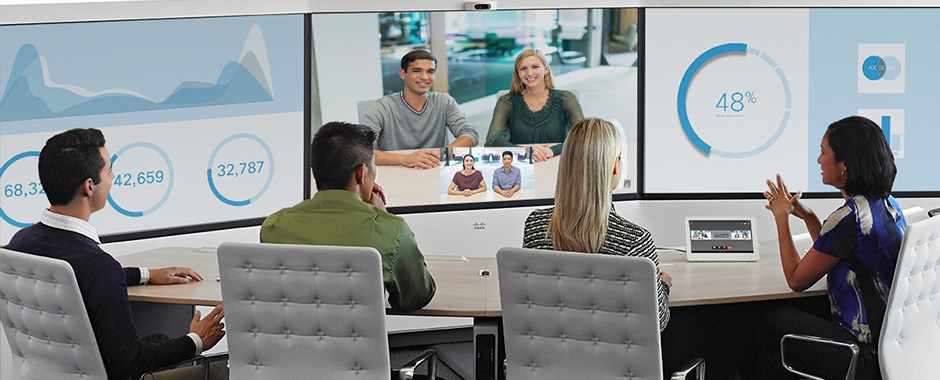
Biopsychosocial Impacts
There are biopsychosocial explanations for Zoom fatigue. Acoustically, millisecond delays in verbal responses (even without bandwidth buffering issues) negatively affect our interpersonal perceptions and subconsciously increase distrust between people. Multitasking while participating (eg. checking your messages, ignoring a barking dog, or responding to pop-up notifications) can overload our cognitive capacity. Psychologically, we may be missing the oxytocin rewards of actual social interaction and direct eye contact, which stimulate feelings of alertness – the opposite of fatigue. And of course, being sedentary increases our risk of fatigue some 40%. Psychiatric Times
Advantages for the Autistic
Although many find the continuous partial attention demanded of “gallery view” exhausting, platforms like Zoom do tend to eliminate side conversations or cross-talk, focusing on a single speaker at a time. For some of us, that is a major frustration (stay tuned for more tomorrow), but for those with autism, it can be a welcome relief from being overwhelmed by multiple people talking at once. People with neurological difficulty coping with in-person conversations or managing small-talk will find the new era of remote work removes a major source of anxiety. That annoying lag between speakers on Zoom adds clarity for autistic participants about “whose turn it is to talk.” National Geographic
“Worlds are Colliding, Jerry”
Self-complexity theory suggests that we all have multiple aspects of ourselves – “context-dependent social roles, relationships, activities and goals” – and those contexts are being collapsed during the pandemic. (Bonus points if you get my gratuitous Seinfeld allusion.) “Imagine if you go into a bar, and in the same bar you talk with your professors, meet your parents, or date someone. Isn’t it weird?” And then there’s the performative aspect: “like you’re watching television and television is watching you.” (Even worse, people with social anxiety may find it magnified when a dozen people in “Hollywood Squares” boxes seem to be staring straight at them.) BBC
What You Can Do Now
There are things you can do today to help counteract Zoom fatigue…
Physical Movement
Don’t forget that much of our psychology is profoundly affected by physiology. During Zoom calls, are you sitting motionless, breathing shallowly, gazing unblinking at the screen? Kitty Wheater, Mindfulness Chaplain at uEdinburgh, suggests you put something personally “nourishing” in your line of sight, try small stretches during Zoom calls, breathe more deeply, and of course preserve time between meetings to walk around, or ideally, walk outside. You may also want to reposition your screen to avoid neckache – and because looking downward at a laptop “physically mimics low mood.” Try taking Zoom calls on your phone, turn off your camera, lie on the floor, or find other ways to relax, change your position, and let your body move. uEdinburgh
“Our mind-bodies are remarkably resilient and adaptive, even when they feel like they’re not. Their signals of discomfort and fatigue are their way of speaking to us; and when we listen, and make changes, and listen again, they bounce back with admirable facility.” – Kitty Wheater, Mindfulness Chaplain, uEdinburgh
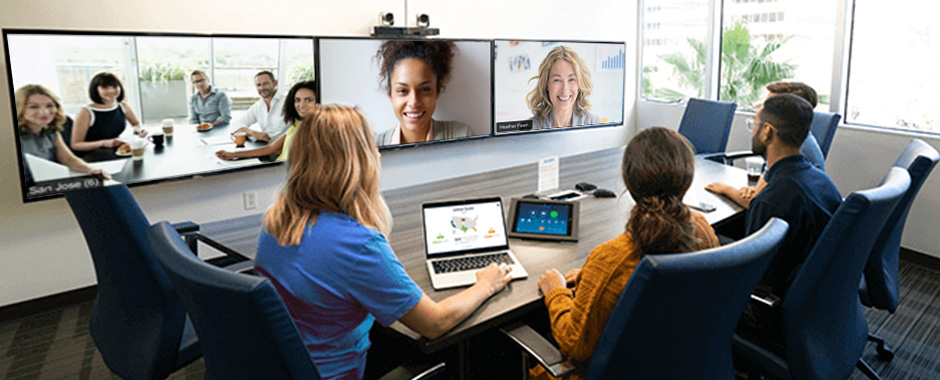
L33Ts vs N00Bs
There’s more than one “digital divide.” We’re all aware by now that those in rural communities, or in lower-income households, may not have access to reliable broadband internet, and therefore have great difficulty participating in synchronous web meetings. But power Zoomers experience much less fatigue because they have invested in superior hardware and connections. I’m comparatively spoiled with my 2-gigabit broadband, a 50” ultrawide display, 4K webcam, Dolby surround stereo and a high-end Rode mic, so I enjoy Zoom calls more. It’s much more like using a proper telepresence suite. (That’s why Zoom sells prepackaged hardware for “Zoom Rooms.”) No doubt it also helps that I’ve got 4 years of experience using Zoom, and 8 years of experience shooting YouTube videos, so much of the discomfort and awkwardness of a newbie is a distant memory now, and I’m used to staring into bright light and exaggerating non-verbal cues. (See my blog, “10 Tips: Look Your Best Online” for more details.)
Improvements to Come
With orders of magnitude more users depending on webconferencing platforms, I think we’ll see a race to implement significant enhancements to the software to address concerns about fatigue. Here are a few hints of what’s coming…
Enhanced Audio
A lot of this hinges on the user buying a decent mic and speakers, but Zoom continues to tweak its AI-driven noise-cancellation functions, and in a perfect world I’d like to see multi-channel sound so that we can hear others, while we’re talking. I’m no sound engineer, but I’d really love to eliminate the endless “oh, sorry – you go – no, you go” nonsense that happens when we realize we talked over someone else. And I really miss hearing the sound of laughter when I tell a good joke!
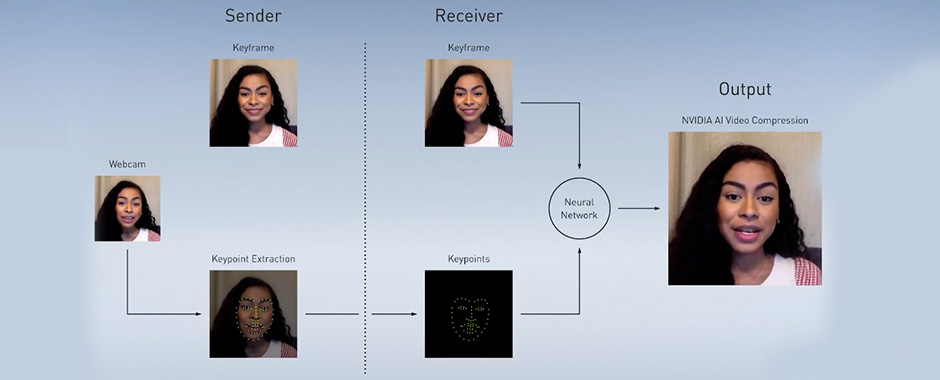
AI-Enhanced Video
Nvidia claims its videoconferencing toolkit, Maxine, could solve some of Zoom’s biggest headaches with amazing AI-driven background noise elimination, autoframing, face re-lighting, superresolution, realtime transcription and translation, and even automatic face and gaze alignment, to ensure you’re always “looking” straight at your webcam. It will also reduce bandwidth requirements by 90% by transmitting only “key facial points,” which then get reanimated in high resolution (similar to deepfake videos). Check out the demos at The Verge
 Animated Avatars
Animated Avatars
Here I go, showing my age again, but remember when Jane Jetson could just pop on a face mask for her video calls, despite just waking up with curlers in her hair? Whether you’re forced to run and shave before a Zoom meeting, or distracted by flaws in your eyeliner, wouldn’t it be easier to push a button and fix your appearance on Zoom? Already, Zoom has a great little function to “touch up your appearance,” but that doesn’t go far enough to relieve the stress some people seem to be feeling at being “on” camera. A number of psychologists believe that animated virtual avatars could be the solution, allowing you to relax about grooming, makeup, perceived attentiveness and facial expression.
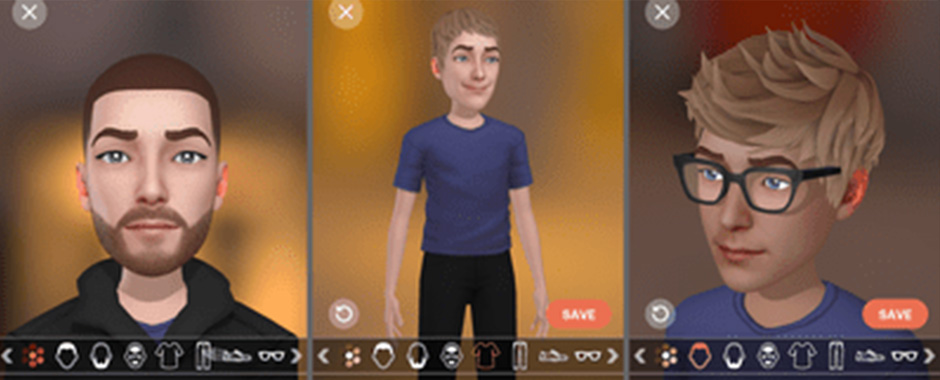
Apps like LoomieLive replace your background and foreground, with a customizable synthetic version of yourself, which appears to talk along with you in real time. The latest iOS brings similar functionality to Facetime calls using a customizable “Memoji,” which will emulate your facial expressions and can be sent along with an audio recording. As deepfake technology improves, it shouldn’t be too long before we can replace ourselves with an indistinguishable clone – although perhaps one 10 years younger and 20 pounds lighter… Meanwhile, I guess you can just turn off your webcam and replace your image with a profile pic!
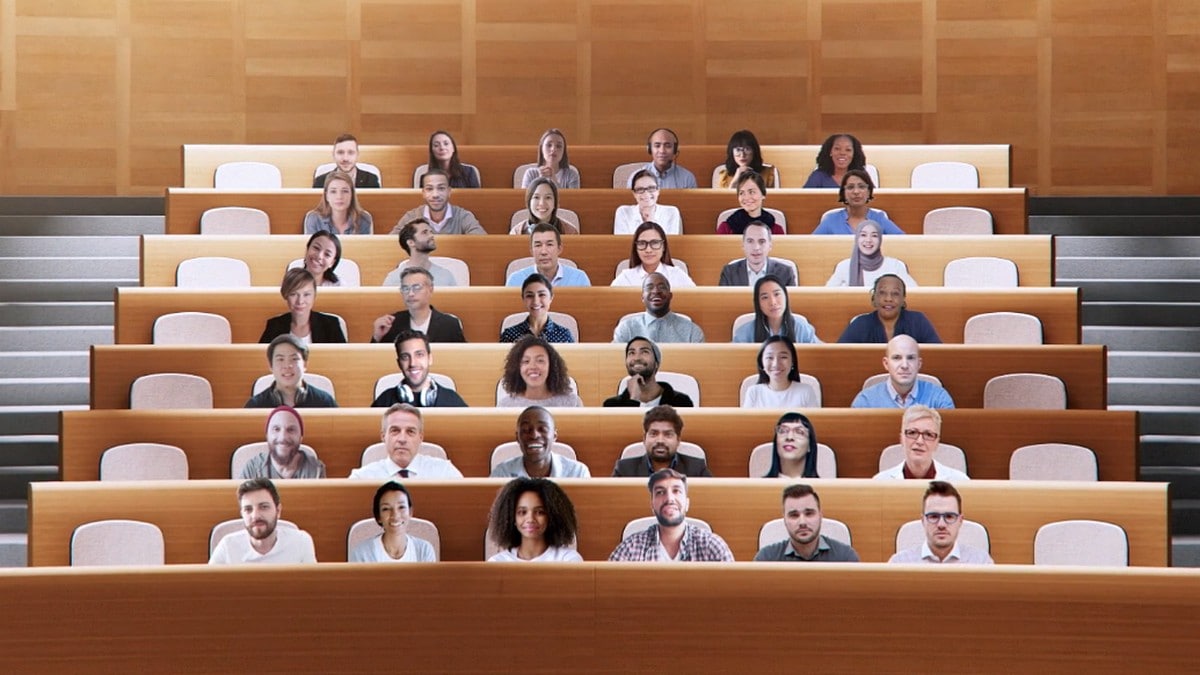
Shared Environments
The “Brady Bunch” grid of disjointed backgrounds and isolated colleagues is distracting and off-putting, but a number of companies are working on solutions. (Apple just bought a company with a VR add-on for Zoom.) Even without a VR headset, though, you can share a single virtual environment for your next meeting in Microsoft Teams. Teams can separate you from your background to blur it or replace it with a fantasy setting (like a beach, or a tidier office). But it can also pluck participants’ images and place them in a single boardroom or classroom. (So far, it works for 5-49 internal participants only.) Microsoft claims it improves the sense of interaction and togetherness, reduces background distractions, and helps people stay attentive. It even lets people “high-five” and “tap” each other on the shoulder. The Verge
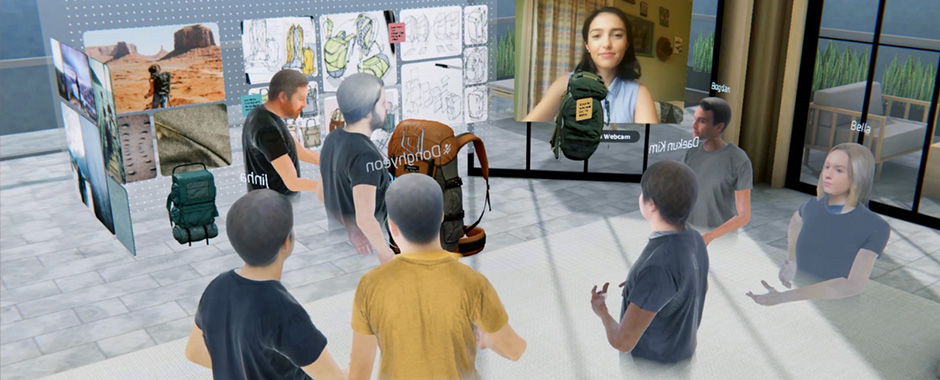
Zoom: The Next Generation
Most of us don’t yet have VR headsets like Hololens or Oculus at our desks, much less in our home offices, and the current generation of VR helmets would get darn uncomfortable after an 8-hour work day. But I was an early adopter of “Second Life” back in the day, and have long wished for the verisimilitude of a Star Trekholodeck. With sufficiently advanced software, bandwidth and processor speed, Zoom meetings could become a whole lot more like being there.
Already, Spatial is an AR platform that simulates in-person meetings with life-like avatars, dynamic sound, and interactive controls. You can bring whiteboards and 3D models right into meetings, or “teleport to someone’s space.” And in response to the COVID19 pandemic, the enterprise version of Spatial is free for anyone to use, even on a web browser. MIT
“There’s a lot of Zoom fatigue right now… because the video format really forces you to be 200% focused when you’re presenting or listening, but you can’t do something together. You can’t be in this space, looking at things together and pointing at things.” – Jinha Lee, Co-founder, Spatial
Thanks for reading! I’ll see you again tomorrow, meanwhile stay safe and be well!

All contents copyright © 2014 Eduvation Inc. All rights reserved.